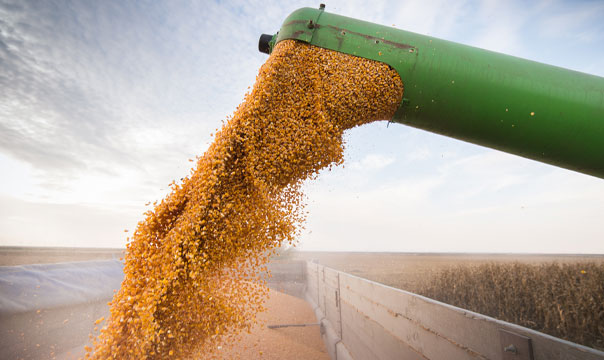Other commodity prices rise
Just as the Russia-Ukraine war temporarily created an oil price shock, the war also played a role in higher food prices. “The Russia-Ukraine war and potential interruptions of grain deliveries from those two agricultural-exporting countries added a degree of uncertainty to the grain commodities market as well,” says Haworth. Yet he believes that, as is usually the case, weather remains the biggest factor affecting prices for agricultural commodities. Food prices have eased from earlier highs. Wheat, corn and soybean prices have declined in value on futures markets over the course of 2024 (though mid-July).3 For the 12 months ending in June 2024, food costs, as measured by CPI, were just 2.2% higher than a year earlier, slightly below the overall 3.0% inflation reading.1
Metals prices can be considered in two categories – precious metals such as gold and silver, and industrial metals used in manufacturing, such as nickel and copper for electric vehicle batteries. Gold prices dropped to a low of $1,831/ounce in October 2023, but rose more than 30% by mid-April 2024, to $2,430/ounce. Prices have settled slightly under the $2,400 level since.4
As for industrial metals, Haworth says supply concerns are an issue, particularly with more robust demand driven by increased production of electric vehicles. Minerals such as cobalt and nickel are key components for electric vehicle batteries.
Investor considerations around commodities
Investors sometimes consider including commodities in a portfolio to hedge the impact of higher inflation. Inflation’s persistence, mostly staying above the 3% level since June 2024,1 added to commodities’ attractiveness. “With inflation a little sticky, we think allocating a portion of a portfolio to inflation-sensitive assets makes sense for a diversified investor,” says Tom Hainlin, national investment strategist at U.S. Bank. “We like exposure across the commodities landscape, including precious metals, industrial metals and agriculture.”
Infrastructure investments also offer opportunities. Options include companies involved in oil pipelines, airports, cell towers, toll roads and other forms of infrastructure. “There is strong demand in many of these areas today,” says Haworth, “but benefitting from owning these investments doesn’t always require that prices move higher. These investments also generate regular income for investors.” Haworth says companies in infrastructure-related businesses tend to have fixed costs but realize bigger profits in times when inflation drives prices higher.
Haworth says commodities sometimes are more effective as a tactical position in a portfolio. “It’s difficult to earn a durable return with direct investments in commodities or commodity futures,” he warns. “However, commodities historically offer positive returns in environments of elevated inflation, as we are seeing now.”
Investors should be prepared for frequent changes, both higher and lower, in commodity prices. Talk with your financial professional about opportunities to position your portfolio to capitalize on market trends stemming from the commodities trade.





